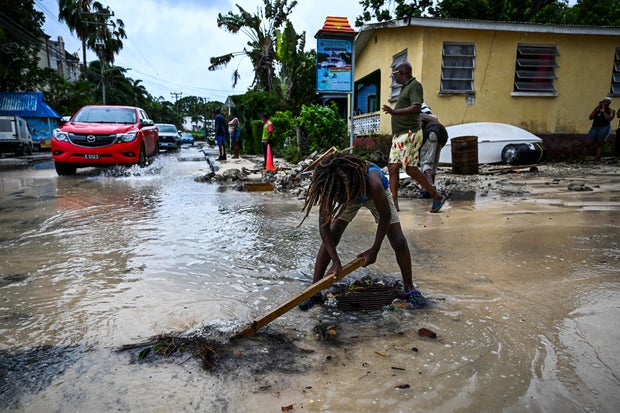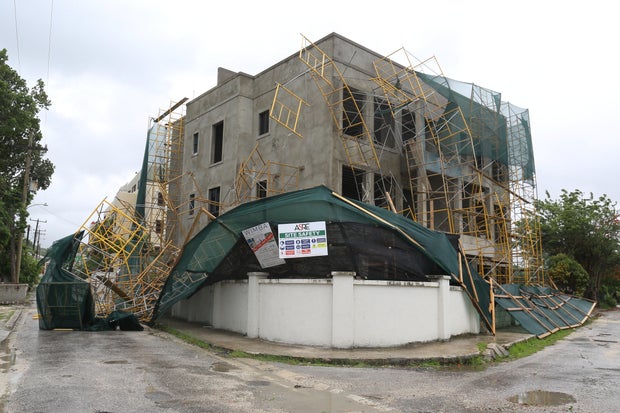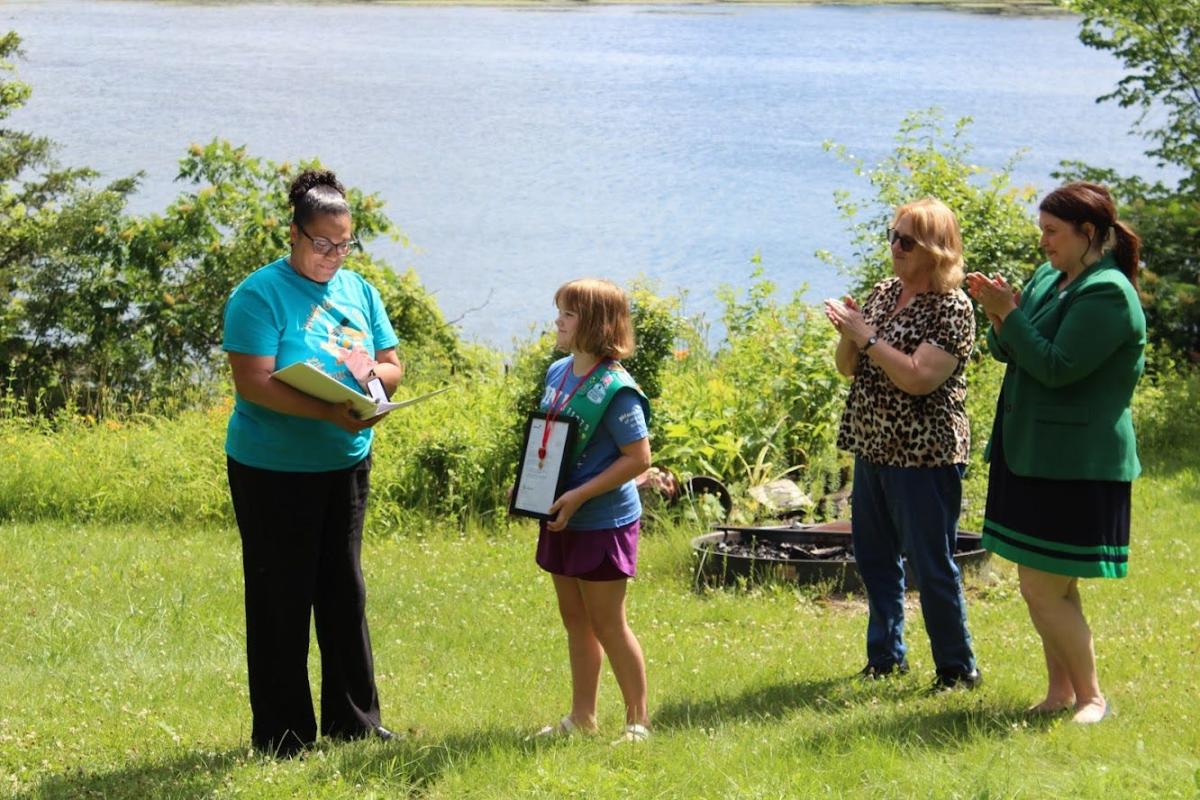Hurricane Beryl swept away doors, windows and roofs from homes in the southeastern Caribbean on Monday after lands on the island of Carriacou as the earliest category 4 storm force to form in the Atlantic Ocean, fueled by record-warm water.
There were no immediate reports of possible deaths or injuries and communications in the region were largely disrupted.
Streets from the island of St. Lucia south to Grenada were littered with tree branches, downed power lines and other debris scattered by wind speeds up to 150 mph — not quite a Category 5 storm. The storm snapped banana trees in half and killed cows lying in green pastures as if asleep. Tin and plywood houses toppled dangerously nearby.
“I am absolutely devastated right now,” said Vichelle Clark King as she surveyed her damaged shop in Bridgetown, the capital of Barbados, filled with sand and water.
Beryl was still whipping around the southeastern Caribbean on Monday evening and was moving on a track That would take him just south of Jamaica before moving toward Mexico’s Yucatan Peninsula on Thursday evening as a Category 1 storm.
Ricardo Mazalan / AP
“Beryl is expected to remain an extremely dangerous major hurricane as it moves across the eastern Caribbean,” the National Hurricane Center said.
The last major hurricane to hit the southeastern Caribbean was Hurricane Ivan 20 years ago, which killed dozens of people in Grenada.
NBC Radio in St. Vincent and the Grenadines reported receiving reports of roofs being torn off churches and schools, while communications began to be cut in the southeastern Caribbean.
CHANDAN KHANNA/AFP via Getty Images
In nearby Grenada, officials received “reports of devastation” from Carriacou and surrounding islands, said Terence Walters, Grenada’s national disaster coordinator. Prime Minister Dickon Mitchell said he would travel to Carriacou as soon as it was safe, noting that there had been “extensive” storm surge.
According to him, authorities in Grenada had to evacuate patients to a lower floor after the hospital’s roof was damaged.
“There is a possibility of even greater damage,” he told reporters. “We have no choice but to continue praying.”
Nigel R Browne / REUTERS
In Barbados, Minister of Home Affairs and Information Wilfred Abrahams said drones – which are faster than crews flying over the island – will assess the damage as Beryl passes.
Weather experts had warned of a life-threatening storm surge of up to 3 metres high in the areas where Beryl made landfall, with 7.6 to 15 centimetres (3 to 6 inches) of rain falling in Barbados and nearby islands, and possibly 25 centimetres (10 inches) in some places, particularly in Grenada and the Grenadines.
Beryl grew from a tropical depression to a major hurricane in just 42 hours. Hurricane expert Sam Lillo says this has only happened six times in Atlantic hurricane history, with September 1 being the earliest possible date.
Andrea De Silva / REUTERS
It was also the first Category 4 hurricane on record in the Atlantic Ocean, surpassing Hurricane Dennis, which became a Category 4 storm on July 8, 2005.
According to hurricane specialist and storm surge expert Michael Lowry, Beryl owes its strength to record-warm waters that are now hotter than they would be during the peak of the hurricane season in September.
Jaswinderpal Parmar of Fresno, California, who was among the thousands of people who traveled to Barbados on Saturday for the Twenty20 World Cup cricket final, said he and his family are now stuck there with dozens of other fans after their flights were canceled on Sunday.
He said over the phone that this is the first time he has experienced a hurricane. He and his family have been praying and have received calls from concerned friends and relatives, even from India.
“We couldn’t sleep last night,” said Parmar, 47.
As Beryl barreled toward the southeastern Caribbean, officials warned of a separate group of thunderstorms that would mimic the hurricane’s path and have a 70 percent chance of becoming a tropical depression.
“There’s always a concern when you have two storms back-to-back,” Lowry said. “When two storms are moving through the same area or nearby, the first storm weakens the infrastructure, so the secondary system doesn’t have to be as strong to have serious impacts.”
Beryl is the second the storm mentioned in the Atlantic hurricane season, which runs from June 1 to November 30. Earlier this month, Tropical Storm Alberto made landfall in northeastern Mexico, claiming four lives.
The National Oceanic and Atmospheric Administration predicts that Hurricane Season 2024 will likely be well above average, with between 17 and 25 named storms. There are forecast to be as many as 13 hurricanes and four major hurricanes.
An average Atlantic hurricane season has 14 named storms, seven of which are hurricanes and three are major hurricanes.











